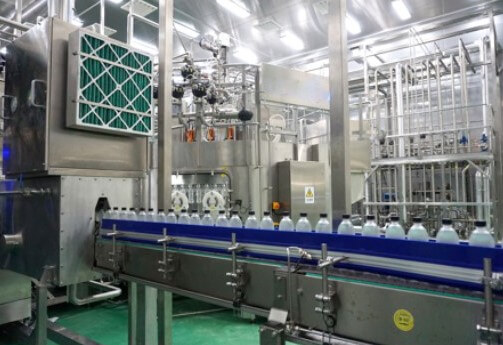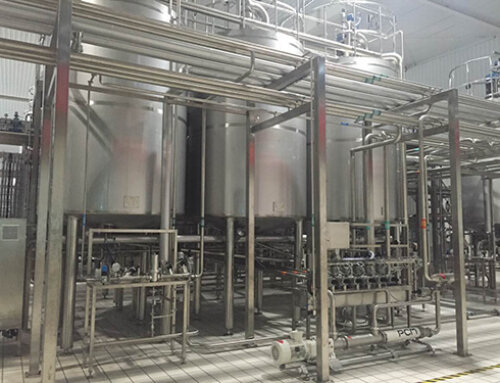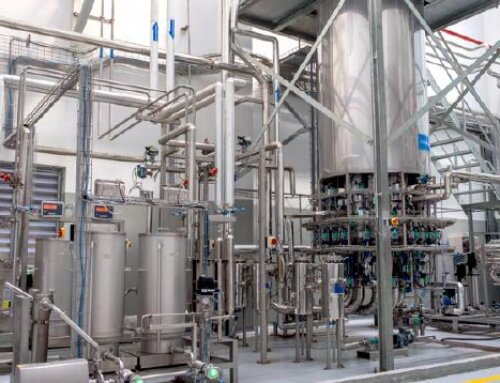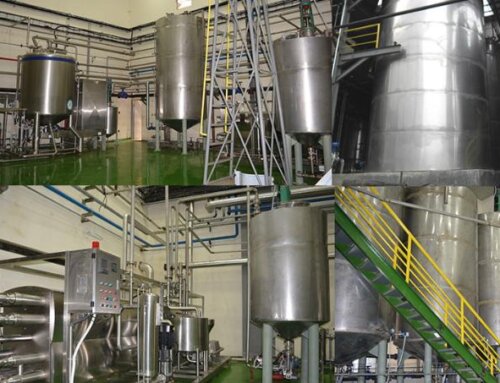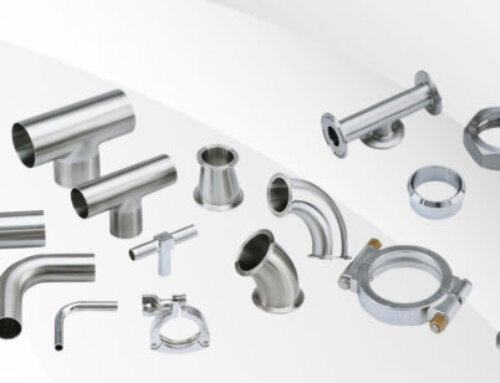When we talk about how to process fresh fruit and vegetable into juice with industrial scale, our regular method is that fresh fruits and vegetables after washing, sorting, crushing(peeling, destining), then we use the juice extractor to obtain the juice from fruit and vegetable mashes, with this method, as different fruits have different feature, so when juice obtain, we will need different juice extractor to process, and if one fruit processing plants want to process several fruits into juice in one workshop, then they need buy different juice extractors to get the juice, and so the investment cost would highly rise. So today we are going to introduce one new method for fruit and vegetable juice processing.
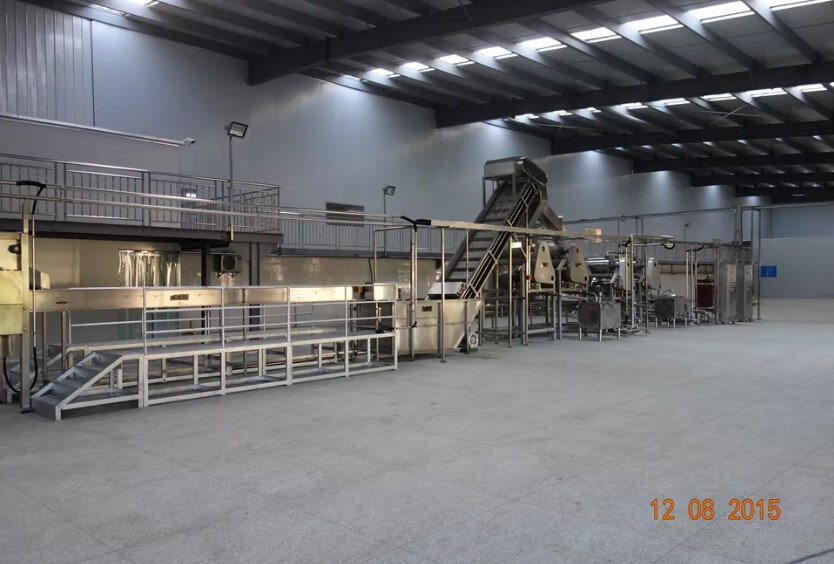
Technological Flowchart of Fruit Juice Processing Line
The first process is also washing, sorting fruits, and then use hammer crusher or mill pump to crush the whole fruits or vegetables into mashes, then the fruit mash will go to decanter centrifuge for juice extracting, the decanter working principle is that the fruit and vegetable mash separates the juice from the solid under the action of the huge centrifugal force of the screw feed, after we get the juice, then pump into enzymatic hydrolysis tank to do the enzyme treatment, By adding pectinase or amylase to decompose the pectin substances in the fruit, the other substances in the juice lose the protection of pectin and form a precipitate. Until this process, we can get the pure juice, and you can do further processing like juice concentration by evaporator or juice clarification by ultrafiltration, At last, the juice will be sterilized and filled into containers. use this process flow, we can process apple, pear, pineapple, carrot, berry banana and other pome fruits into juice.

Key Machine of Fruit Juice Processing Line
I. Raw material cleaning and sorting
In order to ensure the quality of squeezed juice, raw fruit and vegetables must be selected before processing to eliminate moldy, rotten, immature and damaged fruits. Cleaning is an important measure to reduce impurity pollution, reduce the number of microorganisms and pesticide residues. Air bubbling washing machine and spray cleaning are adopted to clean the raw fruits and vegetables, detergents such as hydrochloric acid can be added to the cleaning water.

II.Crushing of raw materials
The crushing of the raw fruits or vegetables before squeezing juice is to increase the juice yield, especially for the high dense pulp fruit, it must be crushed first. The size of the broken fruit pieces should be uniform, 3-4mm is suitable, because the fruit pieces are too big, the juice yield is low, and the broken pieces are too small, which makes it difficult to squeeze the inner juice.

III. Fruit mash enzyme heat treatment
As the enzymes in the fruits and vegetables are released during the crushing process, the activity is greatly increased, especially the polyphenol oxidase will cause color changes in fruits and vegetables. Heating can inhibit the activity of enzymes, soften the pulp tissue, and the soluble substances in the pulp will diffuse out more easily, reducing the viscosity of the juice, thereby increasing the juice yield. Generally, the heat treatment conditions for fruits and vegetables in the preheater are heating to 70-75°C for 10-15 minutes, or instant heating at 85-90°C for 1-2 minutes.
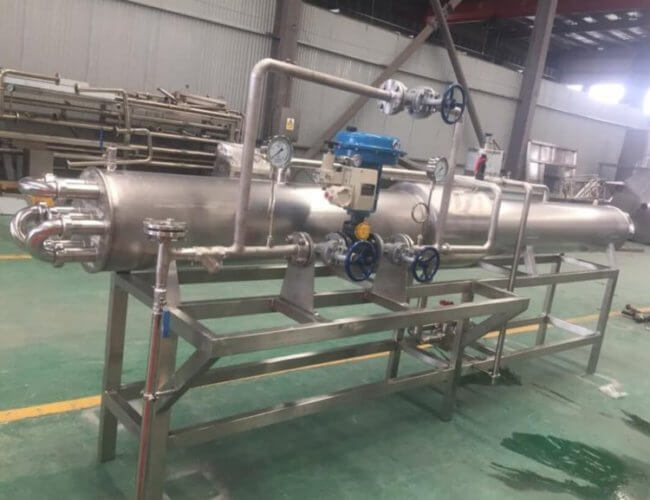
IV. Fruit and vegetable juice extracting
There are two methods for squeezing fruit and vegetable juice. The first is to use mechanical squeezing force to squeeze the juice from the fruit and vegetable pulp, such as screw press or belt press. The second is to separate the juice and pomace of the fruit and vegetable pulp by the centrifugal force of the decanter centrifuge. The juice yield is an important economic index for extracting fruit and vegetable juice. In the process of extracting, in addition to the fruit texture, variety, maturity, and choice of juicer, the degree of crushing and squeezing force, preheating temperature and time of the fruit and vegetable are all the factors that affect the juice yield.

V. Clarification and fine filtration of fruit and vegetable juice
Fruit and vegetable juice contains fine pulp particles, pectin and dissolved substances. In the production of clarified juice, these substances will affect the stability of the product and therefore need to be removed. At present, the main methods for producing clarified juice are enzymatic hydrolysis and ultrafiltration.
The enzymatic hydrolysis method is mainly to add pectinase or amylase into the enzymatic hydrolysis tank to separate the pectin substance in the juice. Enzyme preparations can be added directly into the fresh juice. When using pectinase, attention should be paid to the reaction temperature, processing time, pH value and the dosage of enzyme preparations. The enzymatic hydrolysis reaction temperature is usually controlled at 45-55°C, and the reaction time is controlled at 2-8 hours according to the type and quantity of juice.
Ultrafiltration is a process in which pressure is used as the driving force to separate liquids with different pore diameters of ultrafiltration membranes. At present, it is widely used in the production of apple, grape, pineapple and kiwi juice. The use of ultrafiltration can increase the yield of fruit and vegetable juice by 5%-7%, and the color, nutrients and flavor of fruit and vegetable juice are retained well.

VI. Homogenization and degassing of cloudy juice
The purpose of homogenization is to further break the suspended particles contained in the fruit and vegetable juice, make the particle size uniform, promote the exudation of pectin, maintain the uniform turbidity of the fruit and vegetable juice, and make the juice difficult to separate and sediment. Use a high-pressure homogenizer to process fruit and vegetable juice. The homogenization pressure of turbid fruit and vegetable juice is 18-20MPA, and the homogenization pressure of fruit and vegetable pulp juice is 30-40MPA.
There is a large amount of air in the intercellular spaces of fruits and vegetables, and during the processes of crushing, extracting, homogenizing and stirring the raw fruits and vegetables can also mix air. The oxygen in the air will cause the nutrient loss and color change of the fruit and vegetable juice, so it must be removed. At present, a vacuum degassing method is used to remove oxygen in fruit and vegetable juices. When working, the juice is sprayed downwards from the pump through the control valve into the nozzle, and falls in the vacuum tank. At this time, 85-90% of the gas in the juice is sucked away.

VII. Concentration and dehydration of fruit and vegetable juice
Concentrated fruit and vegetable juice is prepared by dehydration and concentration of clarified fruit and vegetable juice. The concentrated juice has a small volume and a soluble solid content of 65%-75%, which is convenient for packaging and transportation. Commonly used concentration equipment is a vacuum forced circulation evaporator and a vacuum falling film evaporator. The juice is boiled at a low temperature under a vacuum state below atmospheric pressure to separate the water from the raw fruit and vegetable juice. Since the evaporation process is carried out at a lower temperature, the concentration time can be shortened and the color and fragrance of the fruit and vegetable juice can be maintained.

VIII. Sterilization and packaging of fruit and vegetable juice
The purpose of fruit and vegetable juice sterilization is mainly to eliminate microorganisms and inactivate pectinase. The microorganism objects for fruit and vegetable juice sterilization are yeasts and molds, to kill these bacteria, the pasteurization process can be set to 93±2℃holding for 15-30S. For aseptic packaged fruits and vegetable juice, the juice needs to be sterilized at 121-130℃for 3-5S.
The sterilization of fruit and vegetable juice is carried out before filling, and the filling methods include high-temperature filling and low-temperature aseptic filling. The high-temperature filling is to fill the fruit and vegetable juice in a bottle or flexible pouch at 90℃ after sterilization, and use the high temperature of the fruit and vegetable juice to sterilize the surface of the container; low-temperature aseptic filling is to heat the fruit and vegetable juice to the sterilization temperature, keep it for a certain period of time, and then cool it to room temperature through a heat exchanger, and fill the cooled juice into aseptic cartons or bottles.
Concentrated fruit and vegetable juices are generally cold-filled into aseptic big bags and then stored frozen, such as frozen concentrated orange juice.
